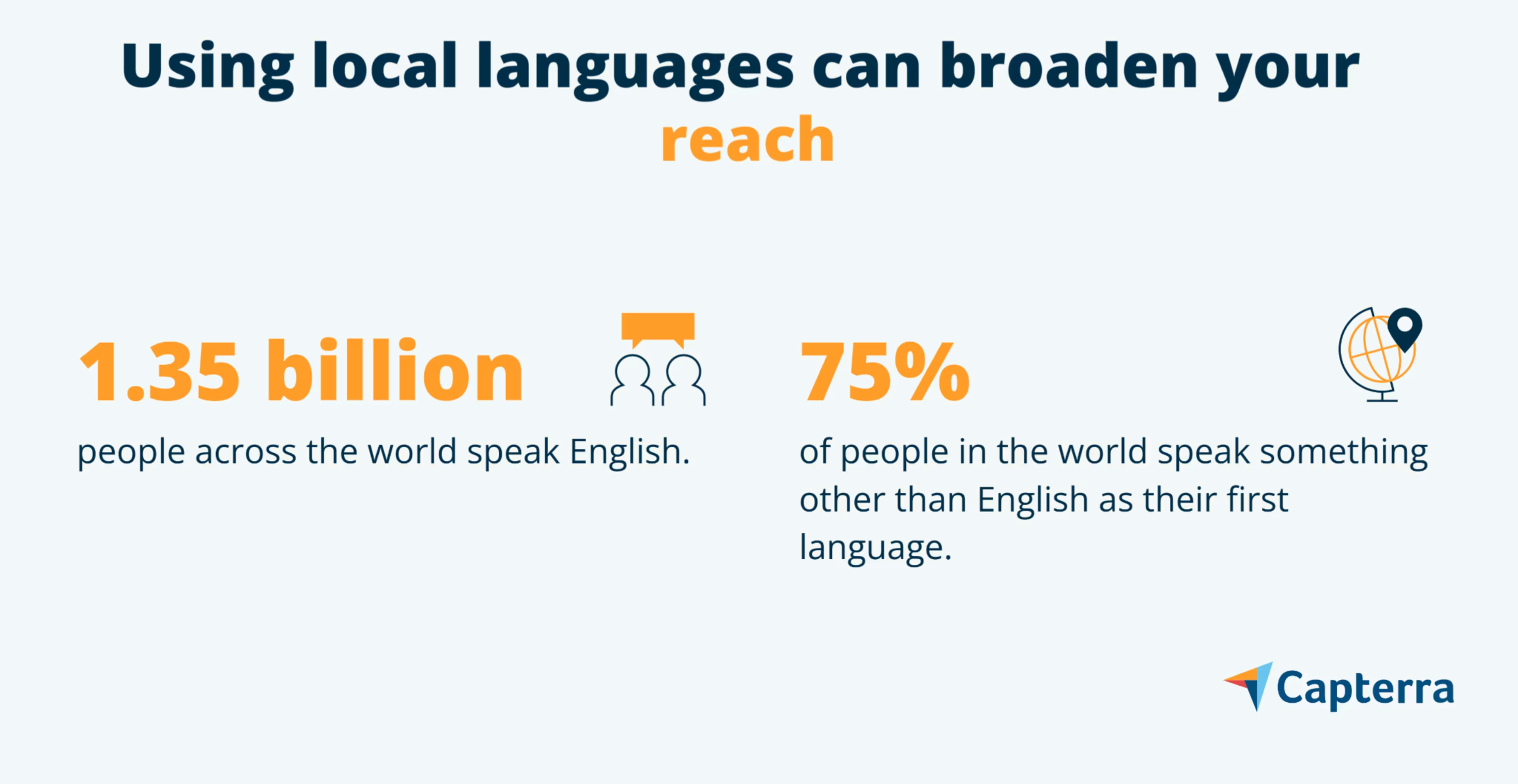Learn how to adapt your social media strategy to international markets by leveraging local experts.
As business has gone global, social media marketing has become increasingly challenging. On one hand, it’s important to send a consistent branding message. On the other, it doesn’t matter how uniform your message is if it doesn’t reach local customers.
Most companies know that branding strategies are about perception, recognition, and identification. A well-honed social media branding effort is the shiny package that sends a message. Local marketing is about what’s inside that package, full of the goods and services targeted to the recipient that will turn them from a potential lead to a bonafide customer.
Adapting your existing social media marketing tactics for international markets is important if you want to remain an industry leader. Using localization and marketing translation services is a vital first step to proving to local customers that your brand can be trusted.
Getting local social media marketing right
Communicating in local languages opens up your market reach beyond the English-speaking world. English might be one of the most common languages in the world, but it’s still only spoken by about 1.35 billion people. Only a quarter of that 1.35 billion speaks English as their first language.

With close to 8 billion people in the world, that’s a lot of people who either don’t speak English at all or only speak it as a second language. These speakers represent a broad range of cultures and languages that differ from the English-speaking world.
Even when compared to the U.S. powerhouse, global social media marketing opportunities are not to be ignored. Recent research demonstrates that 76% of global consumers prefer to make purchases in their local language and 40% say they never shop with websites in other languages. Reaching these consumers takes more than rote translation of existing English materials.
Using local marketing teams or language service providers (LSPs)Understanding global marketing channels
Many businesses promote goods and services on Facebook, Google, Instagram, and more. That’s great in the U.S.; abroad, however, many local consumers do not share an interest in or access to these social networks.
In China, for example, Baidu serves as the main search engine and is used by over 75% of Chinese internet users. The platform has government backing with rules and regulations unique to China. A misstep in using Baidu can cause a business to be banned from the site.
Local expertise is the key to understanding the rules of social media marketing. Just like Facebook or Instagram, these platforms have their own methods of soliciting valuable responses from social media users.
Be the best by translating the right way
Localizing content is not simply a matter of translating word for word into another language. Services like Google Translate are great for a lot of things, but social media marketing isn’t one of them: Strict translations lack nuance and understanding.
Understanding what resonates with locals is particularly crucial when it comes to slogans and taglines in your social media messaging. Inherently short, they’re meant to say a lot with few words. But what makes sense in English can fall flat in other languages.
For example, most English speakers know what is meant by, “she let the cat out of the bag.” Imagine being a non-English speaker trying to understand what it means. An expert in local idioms can come up with the right phrasing or equivalent for the local market on the right social network.
And this isn’t just about messaging that might be confusing when translated strictly—some messaging might be embarrassing or offensive when you don’t account for cultural differences. When something like this occurs, the problem is even worse than ineffective communication. This type of translation mistake could damage your brand or make it so people feel actively turned off by the marketing material.
Localization is more than language
Culture changes across borders. Understanding the currents of culture and tradition can, and should, influence the way we market. But, more importantly, it should impact what we market on social media.
McDonald’s, famous the world over for beef burgers, has a strong presence in India, where cows are considered sacred by millions of people. The local menu in McDonald’s features an impressive array of fish, chicken, and veggie meals unavailable in the U.S. That’s localization at work.
Even visual messages need attention. In much of the Middle East and Asia, using the left hand can be considered unhygienic. A model displaying your product in the wrong hand can be problematic.
Even common gestures like a thumbs up or the okay sign can have different, often vulgar, meanings in other countries. A local expert will recognize these instantly, whereas someone unfamiliar with the culture might not.
You may need to localize images in a number of ways. For example, you might not want to use campaign images that include celebrities from other countries when you localize for a new market. Instead, find celebrities who are relevant to the target market or adapt the strategy to use different types of images.
You might also need to change things like pictures from cities, landscapes, or even the fashion worn by the people in the images. If the contents of an image are identifiable as being from some other place in the world, it might not connect as well with the target audience. If you want to adapt the content for a new market, try to use images they will recognize and connect with. That includes things like local cities, landscapes, and fashions.
Don’t forget to check the calendar
Your content should always be relevant to each market, particularly when the content mentions a holiday or special date. Make sure that your editorial calendar is properly coordinated and up-to-date so you can time your holiday posts (local and international) at the right moment.
For instance, some countries celebrate Mother’s Day on the second Sunday of May. But in Norway, it is observed on the second Sunday of February, while Latin America celebrates on May 10. In several countries in Eastern Europe, Mother’s Day is celebrated on March 8, marked by the spring equinox.
This is just one example of worldwide celebrations that vary depending on the country—on top of local special dates, anniversaries, and celebrations. It’s very important to customize your content for local consumers to ensure interest—and conversions.
Localize content to realize conversions
As global marketing expands for our brands, services, and products, it’s important to remember that the world is more than our own backyard. What appeals in one place on one social media platform might receive poor reception in others. Keeping on top of local trends and using that knowledge will show customers that we understand them, going a long way to establishing trust and confidence.
Because it’s often difficult for marketing professionals on the other side of the world to fully understand different cultural norms and preferences, it’s generally best to leverage the talents of local professionals when localizing social media marketing. Local professionals will be able to do more than just provide reliable translations—they can act as a form of quality control to make sure your messaging comes through and that it fits with the unique context of the local culture.
Thinking about hiring a social media marketing agency to help your boost your social media marketing in international markets? Browse our list of top social media marketing agencies and learn more about their features in our hiring guide.
Are you interested in becoming a guest writer for Capterra? Reach out to guestcontributors@gartner.com for details.
